 |
 |
 |
| |
Switch to E/C/F/TAF + DRV Superior to No Switch Despite High Resistance - Resistance Profile Analysis of Treatment-Experienced HIV-1 Infected Patients Switching to Elvitegravir/Cobicistat/Emtricitabine/Tenofovir Alafenamide (E/C/F/TAF) plus Darunavir (DRV)
|
| |
| |
HIV Drug Therapy, Glasgow 2016
Mark Mascolini
Switching from a multipill regimen to two once-daily pills--elvitegravir/cobicistat/emtricitabine/tenofovir alafenamide (E/C/F/TAF) plus darunavir (DRV)--yielded significantly better 48-week virologic response rates than staying with the baseline regimen regardless of preswitch resistance level [1]. Only 2 of 89 people in the switch arm (2%) had virologic failure at 48 weeks--and both had a viral load below 50 copies at their next visit.
Study GS-US-292-0119 is a phase 3, open-label trial in which virologically suppressed patients taking a complex darunavir-containing regimen were randomized to maintain that regimen or to switch to once-daily E/C/F/TAF plus DRV (800 mg) [2]. Everyone had an undetectable viral load for at least 4 months, at least two prior regimen failures, and resistance to at least two antiretroviral classes. But no one had resistance to darunavir or integrase inhibitors, and no one was currently taking an integrase inhibitor. Participants could have the K65R tenofovir-associated mutation and up to 3 thymidine analog mutations.
The study involved 89 people switching to E/C/F/TAF + DRV and 46 sticking with their baseline regimen. Respective median CD4 counts were 519 and 518, and both groups were taking a median of 5 antiretrovirals per day. About 40% in both groups were taking 6 or more antiretrovirals per day, and two thirds needed at least twice-daily dosing. About half in each group had tried raltegravir, and more than half in each group had taken tenofovir disoproxil fumarate (TDF). Proportions with two- and three-class resistance were 70% and 26% switching to E/C/F/TAF + DRV and 74% and 20% staying with their initial combination.
After 48 weeks, 95% switching to E/C/F/TAF + DRV had a viral load below 50 copies, compared with 76% who stayed with their baseline regimen, a significant difference (P = 0.004).
The new analysis focused on baseline resistance profiles generated from historical genotypic reports. Researchers used the Stanford HIVdb algorithm to calculate a genotypic susceptibility score (GSS) for each drug on a 5-point scale: 1, susceptible; 0.75, potential low-level resistance; 0.5, low-level resistance; 0.25, intermediate-level resistance; 0, high-level resistance. Then they calculated a total GSS for each regimen by adding scores of individual drugs in that regimen.
Proportions of participants in the switch arm and the maintenance arm with resistance to two antiretroviral classes were 70% and 74%, and to three antiretroviral classes 26% and 20%. Almost 40% in the switch arm and almost 30% in the maintenance arm had primary protease inhibitor resistance. More than 80% in both arms had nonnucleoside resistance. More than 90% in each arm had any nucleoside mutation; about 80% in both arms had the M184V/I mutation; and 20% in the switch arm versus 30% in the maintenance arm had the K65R tenofovir mutation.
Among people randomized to E/C/F/TAF + DRV, 63% were taking 60 mg of darunavir twice daily in their baseline regimen and 37% were taking 800 mg once daily. Respective proportions in the maintenance arm were 70% and 30%. Baseline darunavir dose did not substantially affect 48-week sub-50-copy response in either treatment arm: In the switch arm, 33 of 33 people initially on 600 mg of darunavir twice daily and 51 of 56 people (91%) initially on 800 mg once daily had an undetectable viral load at 48 weeks. Those response rates were statistically superior to respective sub-50-copy rates of 79% and 75% in the maintenance arm.
Total baseline GSS did not affect 48-week sub-50-copy rates in the E/C/F/TAF + DRV arm: 45 of 48 people (94%) with a GSS between 2 and 3 had an undetectable load at 48 weeks, compared with 39 of 41 (95%) with a GSS of 3 or more. Baseline GSS did affect response in the maintenance arm, with 48-week sub-50-copy rates of 67% in those with a GSS below 2, 71% in those with a GSS between 2 and 3, and 84% in those with a GSS of 3 or more.
There were 2 virologic failures in the E/C/F/TAF + DRV group: 1 person with an unconfirmed viral rebound still below 400 copies resuppressed to a load below 50 copies at the next visit; and 1 person with a confirmed viral rebound still below 400 resuppressed to a load below 50 copies at the next visit.
The researchers concluded that simplifying treatment to E/C/F/TAF + DRV was statistically superior to staying with the more complex baseline regimen, regardless of baseline total GSS and regardless of baseline darunavir dose (600 mg twice daily or 800 mg once daily). They proposed that "treatment with E/C/F/TAF + DRV offers a simpler and more convenient option for treatment-experienced patients on complex multitablet regimens."
References
1. Margot N, Ram R, Das M, et al. Resistance profile analysis of treatment-experienced HIV-1-infected patients switching to elvitegravir/cobicistat/emtricitabine/tenofovir alafenamide (E/C/F/TAF) plus darunavir (DRV). HIV Drug Therapy, Glasgow 2016. October 23-26, 2016. Abstract O123.
2. Huhn GD, Tebas P, Gallant J, et al. A randomized, open-label trial to evaluate switching to elvitegravir/cobicistat/emtricitabine/tenofovir alafenamide plus darunavir in treatment-experienced HIV-1 infected adults. J Acquir Immune Defic Syndr. 2016 Oct 6. Epub ahead of print.


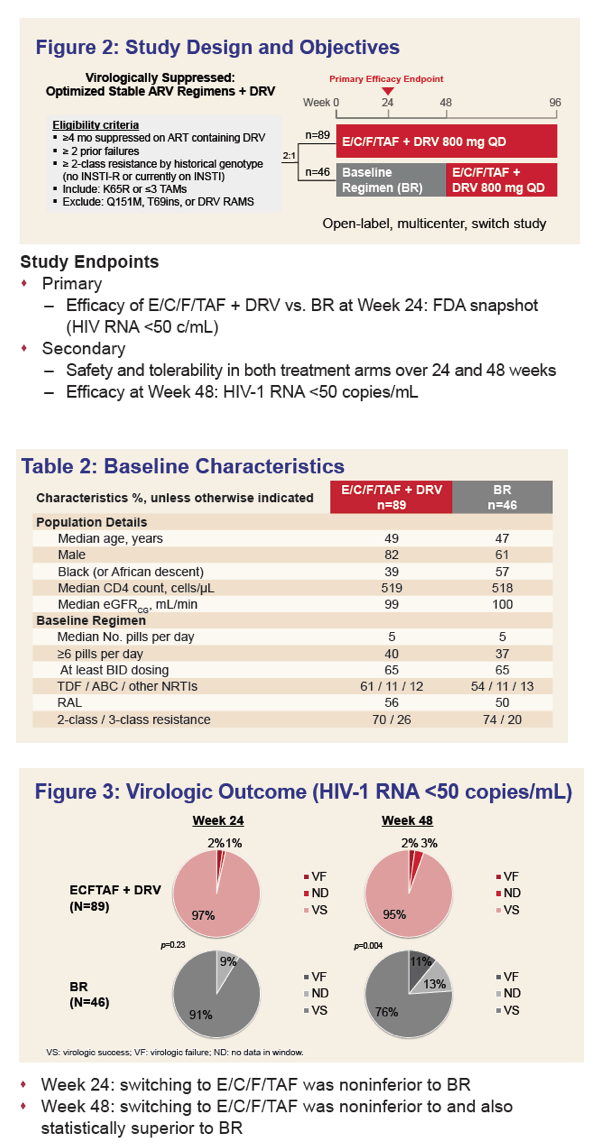
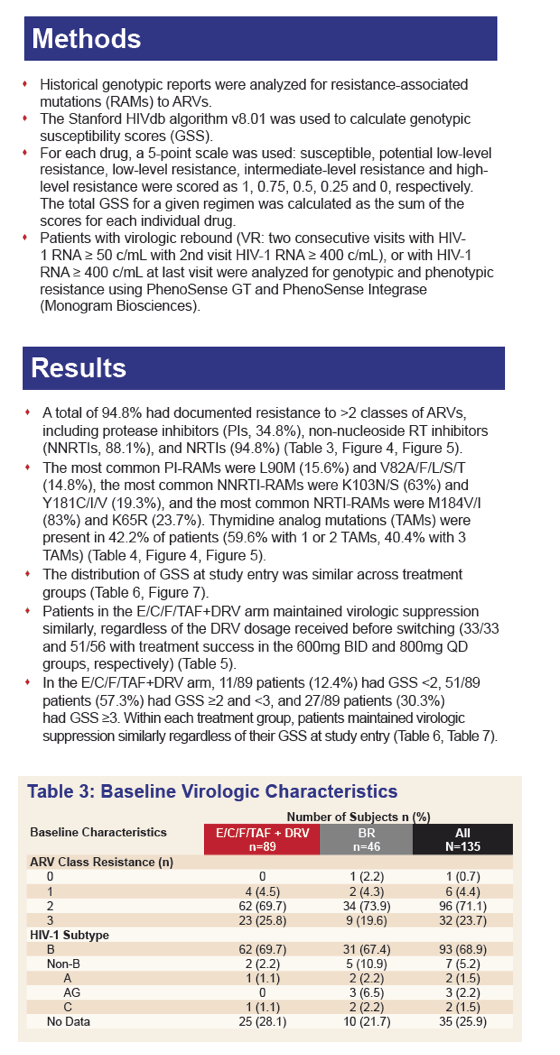
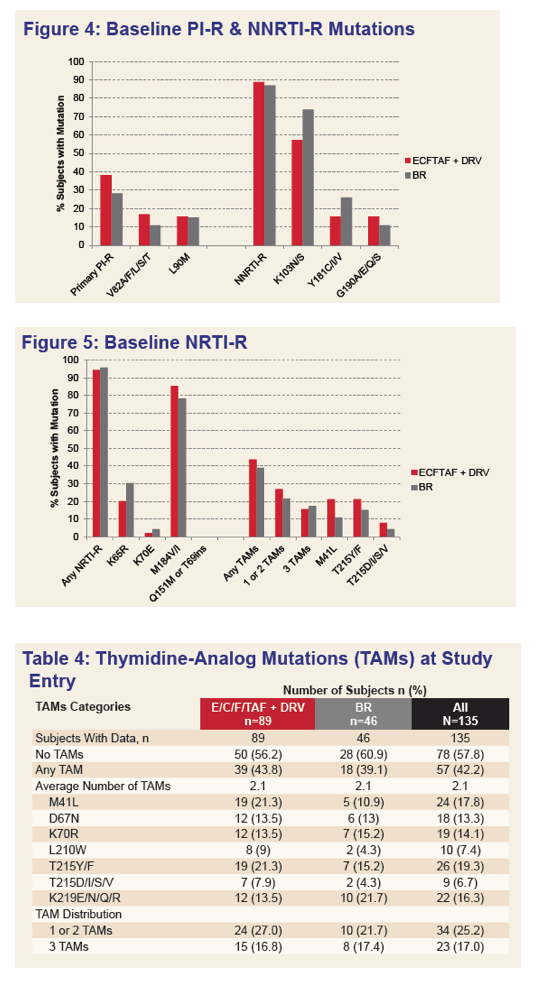
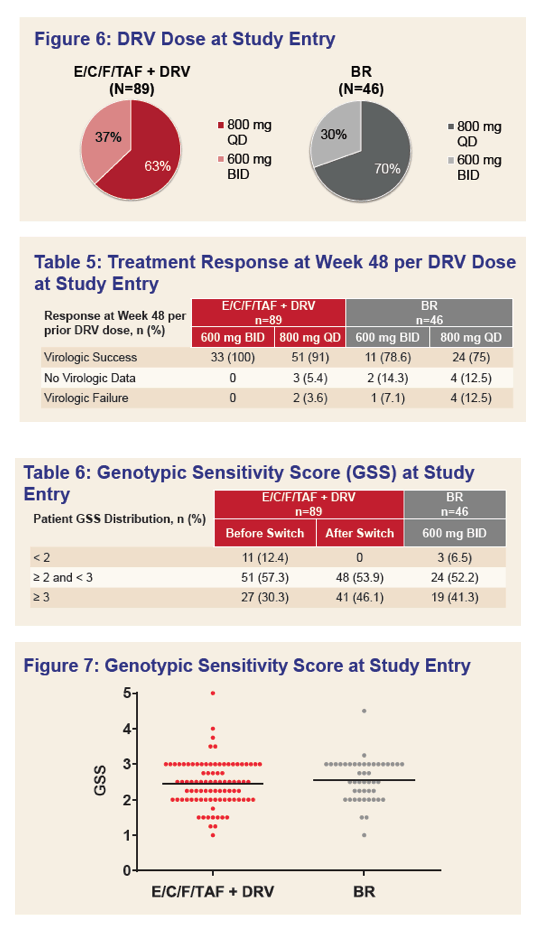
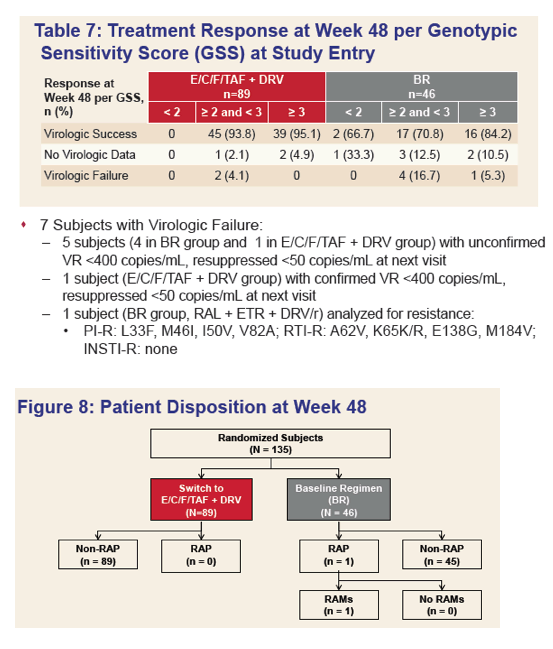
|
| |
|
 |
 |
|
|